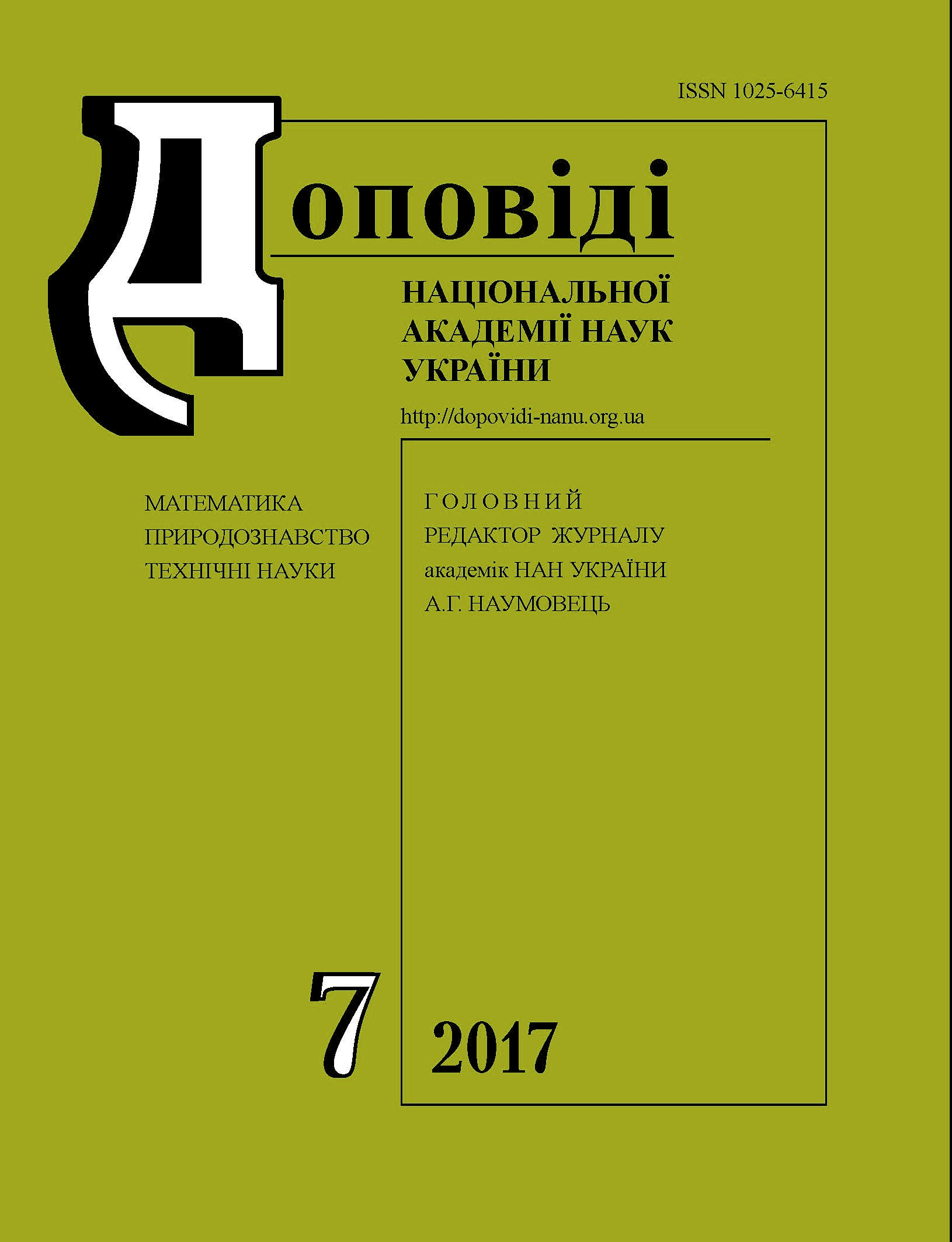Quantum-chemical properties of L-carnitine
DOI:
https://doi.org/10.15407/dopovidi2017.07.064Keywords:
functional groups, L-carnitine, quantum-chemical propertiesAbstract
The distributions of charges and the electrostatic and hydrophobic potentials are analyzed, and the basic reaction centers of a molecule of L-carnitine are revealed. A large dipole moment and the variety of functional groups of the molecule evidence about a possibility of its interaction with polar and nonpolar structures of biomembranes.
Downloads
References
Gubsky, Y. I. & Nizhenkovskaya, I. V. (Eds). (2016). Biological and bioorganic chemistry: textbook. In 2 books. Book 2. Biological chemistry. Kiev: VSV “Medicine” (in Ukrainian).
Owen, L. & Sunram-Lea, S. I. (2011). Metabolic Agents that Enhance ATP can Improve Cognitive Functioning: A Review of the Evidence for Glucose, Oxygen, Pyruvate, Creatine, and L-Carnitine. Nutrients, 3, No. 8, pp. 735-755. https://doi.org/10.3390/nu3080735
Lango, R., Smolenski, R. T., Narkiewicz, M., Suchorzewska, J. & Lysiak-Szydlowska, W. (2001). Influence of L-carniti ne and its derivatives on myocardial metabolism and function in ischemic heart disease and during cardiopulmonary bypass. Cardiovasc. Res., 51, Iss. 1, pp. 21-29. https://doi.org/10.1016/S0008-6363(01)00313-3
Mingorance, C., Rodríguez-Rodríguez, R., Justo, M.L., Álvarez de Sotomayor, M. & Herrera, M.D. (2011). Critical update for the clinical use of L-carnitine analogs in cardiometabolic disorders. Vasc. Health Risk Manag., 2011, No. 7, pp. 169-176. doi: https://doi.org/10.2147/VHRM.S14356
Chekman, I.S. (2012). Quantum pharmacology, Kyiv. Naukova Dumka (in Ukrainian).
Kohn, W. & Sham, L. (1965). Self-Consistent Equations Including Exchange and Correlation Effects. J. Phys. Rev., 140, No. 4, pp. 1133-1145. https://doi.org/10.1103/PhysRev.140.A1133
Becke, A.D. (1993). Density-functional thermochemistry. III. The role of exact exchange. J. Chem. Phys., 98, No. 18, pp. 5648-5661. https://doi.org/10.1063/1.464913
Tomasi, J., Mennucci, B. & Cammi, R. (2005). Quantum Mechanical Continuum Solvation Models. Chem. Rev., 105, No. 8, pp. 2999-3093. https://doi.org/10.1021/cr9904009
Schmidt, M.W., Baldridge, K.K., Boatz, J.A., Elbert, S.T., Gordon, M.S., Jensen, J. J., Koseki, S., Matsunaga, N., Nguyen, K.A., Su, S., Windus, T.L., Dupuis, M. & Montgomery, J.A. (1993). General atomic and molecular electronic structure system. J. Comput. Chem., 14, No. 11, pp. 1347-1355. https://doi.org/10.1002/jcc.540141112
Granovsky, A.A. Firefly version 8. Retrieved from http://classic.chem.msu.su/gran/firefly/index.html
Kazakova, O.A. (2011). Interaction of bioactive molecules with highly dispersed silica surface in aqueous medium: quantum chemical investigation. Poverhnost, 2011, Iss. 3, pp. 13-21 (in Russian).
Cheeseright, T., Mackey, M., Rose, S. & Vinter, A. (2006) Molecular Field Extrema as Descriptors of Biological Activity: Definition and Validation. J. Chem. Info. Model, 46, No. 2, pp. 665-676. https://doi.org/10.1021/ci050357s
Downloads
Published
How to Cite
Issue
Section
License
Copyright (c) 2024 Reports of the National Academy of Sciences of Ukraine

This work is licensed under a Creative Commons Attribution-NonCommercial 4.0 International License.



